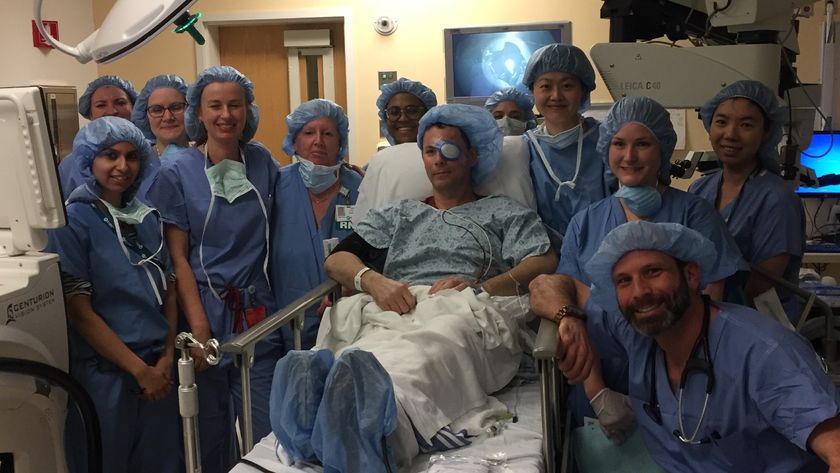Double Leg Transplant Patient May Walk Again, Will Face Challenges
Surgeons in Spain have performed the first-ever two-leg transplant, researchers announced yesterday.
The patient lost both of his legs above the knee in an accident, according to news reports. There are many risks to such a complex operation, including that the patient's body could reject the limbs. But the researchers say the patient may walk again in a little more than half a year if his rehabilitation goes well.
"I think it's a significant step. It's a landmark event," said Dr. David Levi, a professor and transplant surgeon at the University of Miami Miller School of Medicine, who was not involved in the operation. "It really is the cutting edge of clinical transplantation," Levi said.
Based on past successes in hand and forearms transplants, "There's the potential for a remarkably good outcome," Levi said.
But a long road ahead remains, Levi said. Even if the patient does not experience major complications, it could take years before the limbs are functional, he said. We asked Levi a few questions about this operation.
What are the challenges to the patient?
The operation is major, requiring the connecting of bone, nerves and muscle. The patient will have to undergo a long period of physical therapy and rehabilitation before the limbs are functional, Levi said.
Sign up for the Live Science daily newsletter now
Get the world’s most fascinating discoveries delivered straight to your inbox.
Even though the nerves are physically connected, it will take months to years for the nerves to regain the ability to send signals to the brain and for the patient to have feeling and movement in his legs, Levi said.
In addition, the patient will need to be on immunosuppressive drugs for the rest of his life so that the limb is not rejected.
How does a leg transplant compare to an arm transplant?
Arm transplants and leg transplants are similar, and doctors can use arm transplants as a model for what might happen after a leg transplant, Levi said.
But there are some unique challenges to leg transplants. For one, the nerves in the legs are physically longer than the nerves in the arms. That means it will take longer for the nerves in the legs to heal, Levi said.
In addition, a patient will have to learn to use both legs together, as is needed for walking, and the legs will need to be strong enough to bear the body's weight.
This is the first double leg transplant why now?
A leg transplant is not really considered a "life-saving transplant ," Levi said; it is done to improve a patient's quality of life. That means the technology has to be good enough so that benefits to the patient will outweigh the risks, he said.
"You can't tolerate having an operation that has lots of complications," Levi said. "You can't justify that if it's not really to save their lives, unless you really have improved everything to the point where those risks are pretty low," he said.
"The science and the medicine of these types of transplants has to move forward very, very careful so we don't do the wrong thing," Levi said.
In addition, there are alternative options for amputees. "There are fantastic prosthetics available," Levi said. That's why it's very important to select the right patients for an operation like this, he added. In this case, the patient had both legs amputated above the knee, a situation that would make it much harder for the patient to walk with prosthetics, Levi said.
Do you think the patient will walk again?
When arm and forearm transplants are done correctly, meaning patients are carefully selected and undergo a through rehabilitation process, "They have done remarkably well," Levi said. The amount of function patients gain in their arm is close to normal, he said.
These positive results provide hope for the double-leg transplant patient, Levi said. It is "definitely possible" that the double-leg transplant patient will to be able to walk again, but this could take years, he said.
Pass it on: A double amputee might be able to walk again after receiving a double-leg transplant.
- 10 Medical Myths that Just Won't Go Away
- Myth or Truth? 7 Ancient Health Wisdoms Explained
- Will Uterus Transplant Succeed? Exclusive Q&A with Surgeon's Collaborator
Follow MyHealthNewsDaily staff writer Rachael Rettner on Twitter @RachaelRettner.

Rachael is a Live Science contributor, and was a former channel editor and senior writer for Live Science between 2010 and 2022. She has a master's degree in journalism from New York University's Science, Health and Environmental Reporting Program. She also holds a B.S. in molecular biology and an M.S. in biology from the University of California, San Diego. Her work has appeared in Scienceline, The Washington Post and Scientific American.











